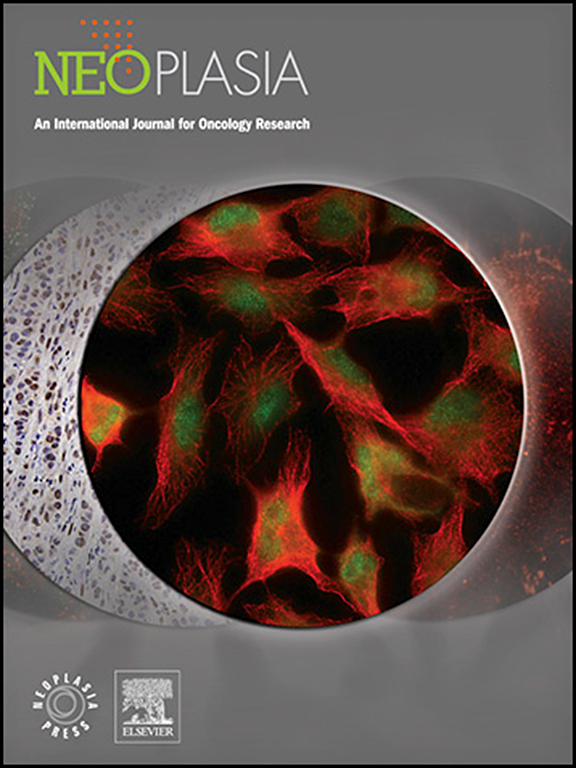m6A eraser ALKBH5/treRNA1/DDX46 axis regulates BCR expression
IF 7.7
2区 医学
Q1 Biochemistry, Genetics and Molecular Biology
引用次数: 0
Abstract
Epitranscriptomic modifications, particularly N6-methyladenosine (m6A), have emerged as critical regulators of RNA stability, localization, and translation, shaping immune responses and tumor progression. In B-cell biology, m6A modifications influence germinal center formation and antigen-driven differentiation, underscoring their importance in immune regulation. Among m6A regulators, ALKBH5 (RNA demethylase) is pivotal in removing methylation marks and modulating gene expression in diverse cellular contexts. Despite advancements in understanding m6A dynamics, the mechanistic interplay between m6A demethylation and B-cell receptor (BCR) signaling pathways still needs to be explored. This study reveals a novel regulatory axis involving ALKBH5, treRNA1 (Translation Regulatory Long Non-Coding RNA 1), and DDX46 (RNA helicase). Upon activation signals, ALKBH5 and treRNA1 translocate to the nucleus, forming a functional complex with DDX46 to orchestrate the removal of m6A modifications on key transcripts, including those involved in BCR signaling. This demethylation enhances transcript stability and facilitates cytoplasmic export through interaction with the RNA-binding protein HuR, promoting efficient translation. Disruption of this axis, via loss of ALKBH5, DDX46, or treRNA1, led to impaired transcript processing and diminished BCR-related gene expression, highlighting the critical role of m6A demethylation in maintaining RNA dynamics. These findings uncover a previously unrecognized epitranscriptomic mechanism driven by the ALKBH5-treRNA1-DDX46 complex, with significant implications for B-cell functionality, immune regulation, and oncogenic pathways. Targeting this axis offers a promising avenue for developing therapeutic strategies in cancer and immune-related disorders where m6A dysregulation plays a central role.

m6A擦除器ALKBH5/treRNA1/DDX46轴调控BCR的表达
外转录组修饰,特别是n6 -甲基腺苷(m6A),已经成为RNA稳定性、定位和翻译、塑造免疫反应和肿瘤进展的关键调节因子。在b细胞生物学中,m6A修饰影响生发中心的形成和抗原驱动的分化,强调了它们在免疫调节中的重要性。在m6A调节因子中,ALKBH5 (RNA去甲基化酶)在去除甲基化标记和调节不同细胞背景下的基因表达方面起着关键作用。尽管对m6A动力学的了解有所进展,但m6A去甲基化与b细胞受体(BCR)信号通路之间的机制相互作用仍需探索。这项研究揭示了一个涉及ALKBH5、treRNA1(翻译调节长链非编码RNA1)和DDX46 (RNA解旋酶)的新调控轴。在收到激活信号后,ALKBH5和treRNA1转运到细胞核,与DDX46形成一个功能复合物,协调去除关键转录本上的m6A修饰,包括那些参与BCR信号传导的转录本。这种去甲基化增强了转录物的稳定性,并通过与rna结合蛋白HuR的相互作用促进细胞质输出,促进了高效的翻译。通过ALKBH5、DDX46或treRNA1的缺失,该轴的破坏导致转录加工受损和bcr相关基因表达减少,这突出了m6A去甲基化在维持RNA动力学中的关键作用。这些发现揭示了一种以前未被认识的由ALKBH5-treRNA1-DDX46复合物驱动的表转录组学机制,对b细胞功能、免疫调节和致癌途径具有重要意义。靶向m6A轴为开发癌症和免疫相关疾病的治疗策略提供了一条有希望的途径,其中m6A失调起着核心作用。
本文章由计算机程序翻译,如有差异,请以英文原文为准。
求助全文
约1分钟内获得全文
求助全文
来源期刊

Neoplasia
医学-肿瘤学
CiteScore
9.20
自引率
2.10%
发文量
82
审稿时长
26 days
期刊介绍:
Neoplasia publishes the results of novel investigations in all areas of oncology research. The title Neoplasia was chosen to convey the journal’s breadth, which encompasses the traditional disciplines of cancer research as well as emerging fields and interdisciplinary investigations. Neoplasia is interested in studies describing new molecular and genetic findings relating to the neoplastic phenotype and in laboratory and clinical studies demonstrating creative applications of advances in the basic sciences to risk assessment, prognostic indications, detection, diagnosis, and treatment. In addition to regular Research Reports, Neoplasia also publishes Reviews and Meeting Reports. Neoplasia is committed to ensuring a thorough, fair, and rapid review and publication schedule to further its mission of serving both the scientific and clinical communities by disseminating important data and ideas in cancer research.
 求助内容:
求助内容: 应助结果提醒方式:
应助结果提醒方式:


